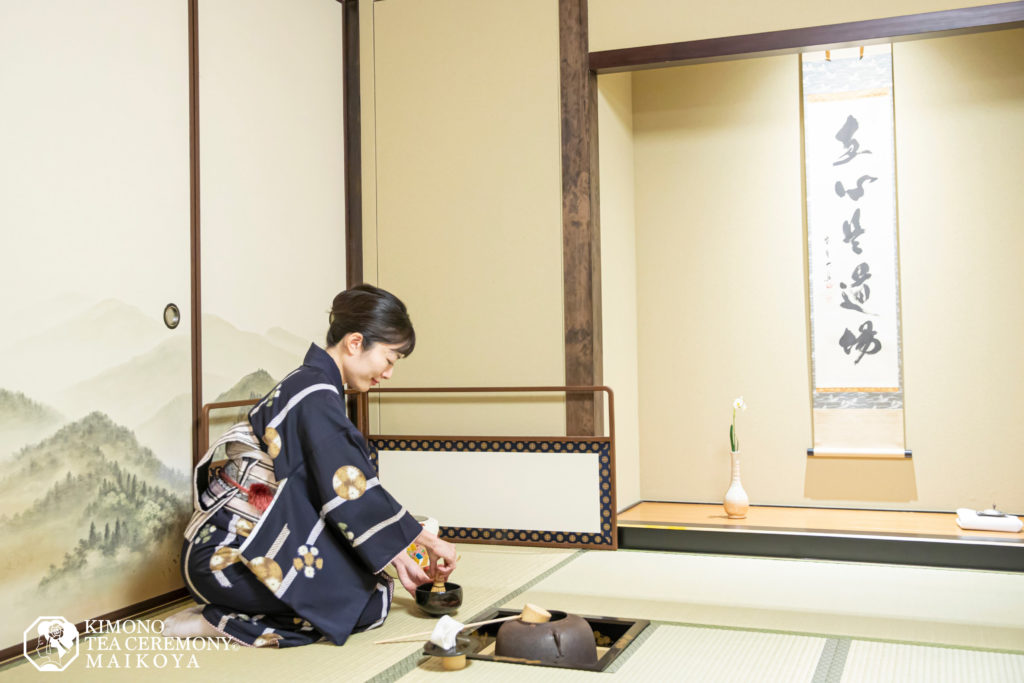

Last time, I talked about the change in the architectural style of the CHASEKI from the SHOIN style to the simple SOAN style from the time of JOOH and RIKYU. So why were they often changing? The first thing that can be considered is the strict hierarchy and resistance to the formalities that existed in society at that time. In the Tea ceremony, Sen no Rikyo believed that status and materialism is the most superfluous thing, and it was absolutely necessary to eliminate them.
In the SHOIN style, high-ranking people sit in the upper tiers, and lower-ranked people sit in the lower tiers or in a separate room, so there is no emotional connection or bonding between the host and the guests. So as a place that is even higher than any high-ranking person, the alcove is made on the upper seat of the floor, and the famous Zen priest’s hanging scroll is written on it, and the people who drink tea are seated on the floor. It was devised so that you can sit on the same plane even if there is a form of segregation. In addition, the Mizuya (tea ceremony kitchen) was created in CHASEKI for the sole purpose of making tea, and all other equipment was pushed into the ROJI (the tea garden).
In other words, it can be said that the reason why one independent style of the CHASEKI was born is to completely focus the minds when the people make tea without the distraction and troubles of everyday life – that is why the tea house needed to be independent of the main building. Also, by removing all the useless decorations from the CHASEKI and making it as simple as possible, we were able to naturally enter the spirit of the tea ceremony, “WA-KEI-SEI-JYAKU” (和敬清寂).
The CHASEKI of the SOAN style completed by RIKYU has become the mainstream of tea rooms and has become widespread until today. Many famous tea masters have created their own tea rooms with ingenuity, many of which are famous tea rooms all over Japan.

Contact us : info@mai-ko.com




